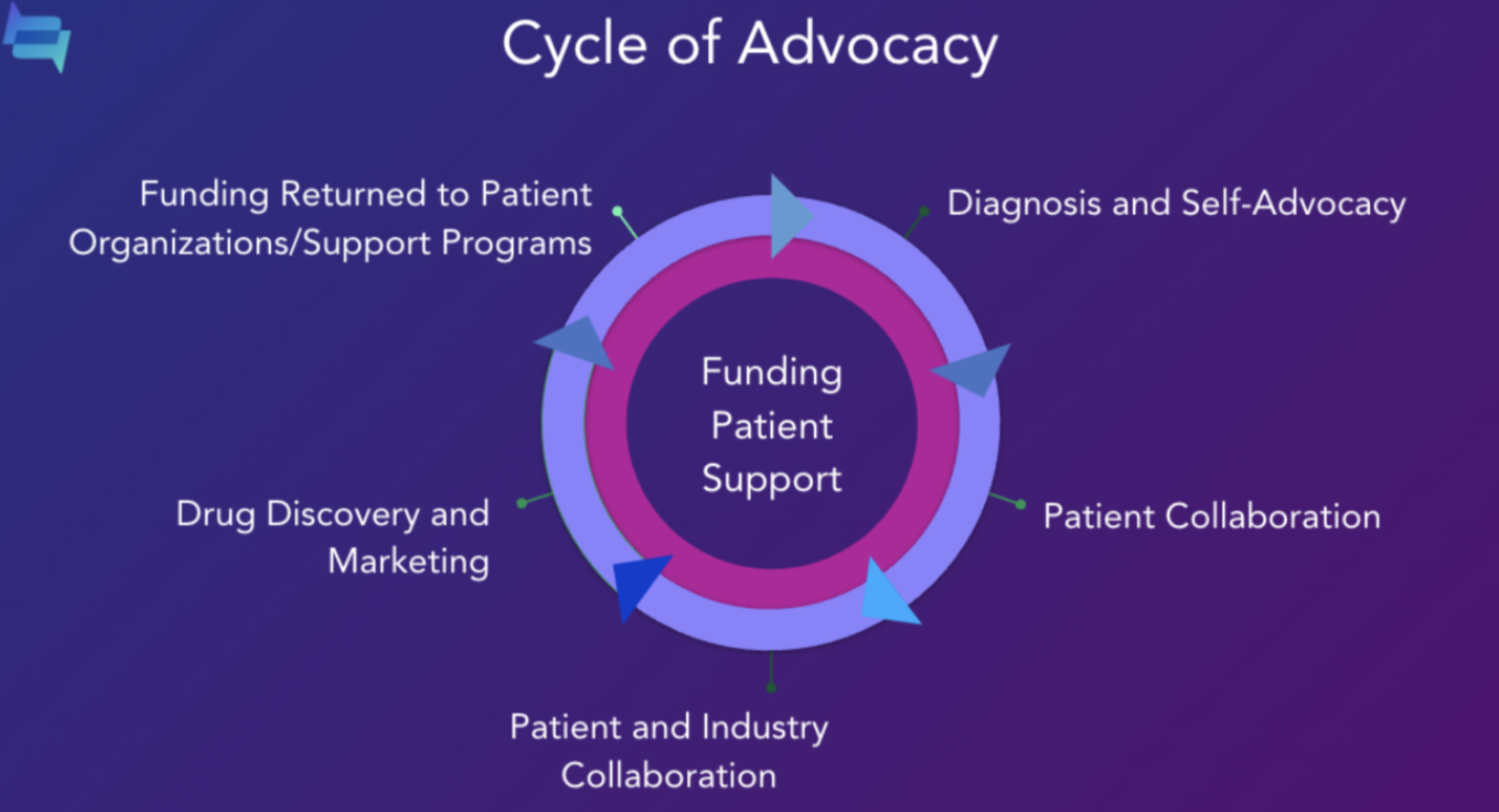The Cycle of Patient and Health Advocacy
At the Social Health Network, our job is to help support you as you grow from a patient or caregiver to a powerhouse in the community.
We want to give you the tools to:
- Use your voice to make the needs of your community known
- Support or oppose legislation that empowers or endangers patients
- Organize and utilize the voices of others who are suffering to make your needs known to industry leaders
- Give you a seat at the table when it comes to how the world views, funds, and prioritizes your life.
By giving you the training you need to become a Patient Leader, we help move along the cycle of advocacy. This brings about the kind of change we know is possible when voices like yours are heard!
In the world of advocacy, we all play a part. Patients and pharma rely heavily on each other to create new treatments and cures. It’s important that when you become a Health Leader you understand how the flow of funding works to get us to the finish line. Take a look at the chart below and let’s trace the cycle of advocacy.

Diagnosis and self-advocacy
We start with patients who get a diagnosis and learn to self-advocate. Advocacy could be working to get the treatment you need, or learning how to manage your disease. For some, this road is easy because the resources already exist. For others (like those with rare diseases recently discovered through whole genome sequencing) the road can be a lot lonelier. But when we advocate for ourselves in the exam room, we discover that we can use the same tools to advocate for the entire community and cause.
Patient collaboration
The step of patient collaboration is essential to getting us to drug development. This can also lead to continued funding for nonprofits, patient resources, and even sites like ours that offer community hubs. In numbers, we are stronger. That’s one of the reasons we have always worked to create spaces for patients to connect and strategize on how they can help their communities together.
But what does this mean? We’re not talking about just putting out pamphlets and holding support groups. We’re talking about creating real and meaningful datasets that can lead to treatments and cures. Patient registries, for example, can alert the entire community about potential clinical trials and studies they can sign up to participate in. They can band together and show gaps in care or treatment. This can then be suggested to the industry, and let them know where the most urgent help is needed.
Patient and industry collaboration
Which brings us to the next phase, patient and industry collaboration. The truth – and it may be hard for some of us to swallow – is that patient and industry collaboration is crucial to funding every awareness effort in every community. Drugs aren’t developed out of thin air, they’re researched and pulled into existence by the needs of the community requesting them. That’s you. That’s us. Working with pharma means that we can move on to the next step which is...
Drug discovery and marketing
Pharma will lean on the patient community to:
- Create clinical trials
- Showcase the need and support for the approval of the drug
- Work with other patients to market the drug, so that newly diagnosed patients can know their treatment options.
Funding
Pharma then profits from the drug and is able to funnel that money back into support groups and nonprofits. This helps to raise more awareness for the disease and continue finding patients in need of the drug.
Better outcomes
Through all of this collaboration, patients get heard, diagnosed, treated, and connected to create better overall outcomes for their communities.
If you’re new to advocacy and wondering how best to find yourself in the cycle of advocacy, know that you embody these three elements that keep the cycle of advocacy moving. As a Health Leader, your responsibilities include:
- Expressing the need for better diagnostics, treatment, social acceptance, and social and financial support – your thoughts, ideas, feelings, and hardships need to be shared, whether that’s in blog posts, on social media, through insight groups, or other speaking opportunities.
- Being the public face of your condition and embodying the human element of what it means to be a patient with this disease. This helps to reduce stigma and bridge compassion between those with the disease and those without it. This doesn’t always mean literally sharing photos, but instead being vulnerable and open about your experiences and helping others to understand that you’re not just a patient, you’re a person with a life worth caring about.
- And lastly, your final responsibility is holding healthcare accountable for their work by providing feedback and guidance on their work to ensure that patients are always top of mind.
As a Health Leader, you are at the center of the cycle of advocacy, and without your work, nothing in healthcare can be improved.
Join the conversation